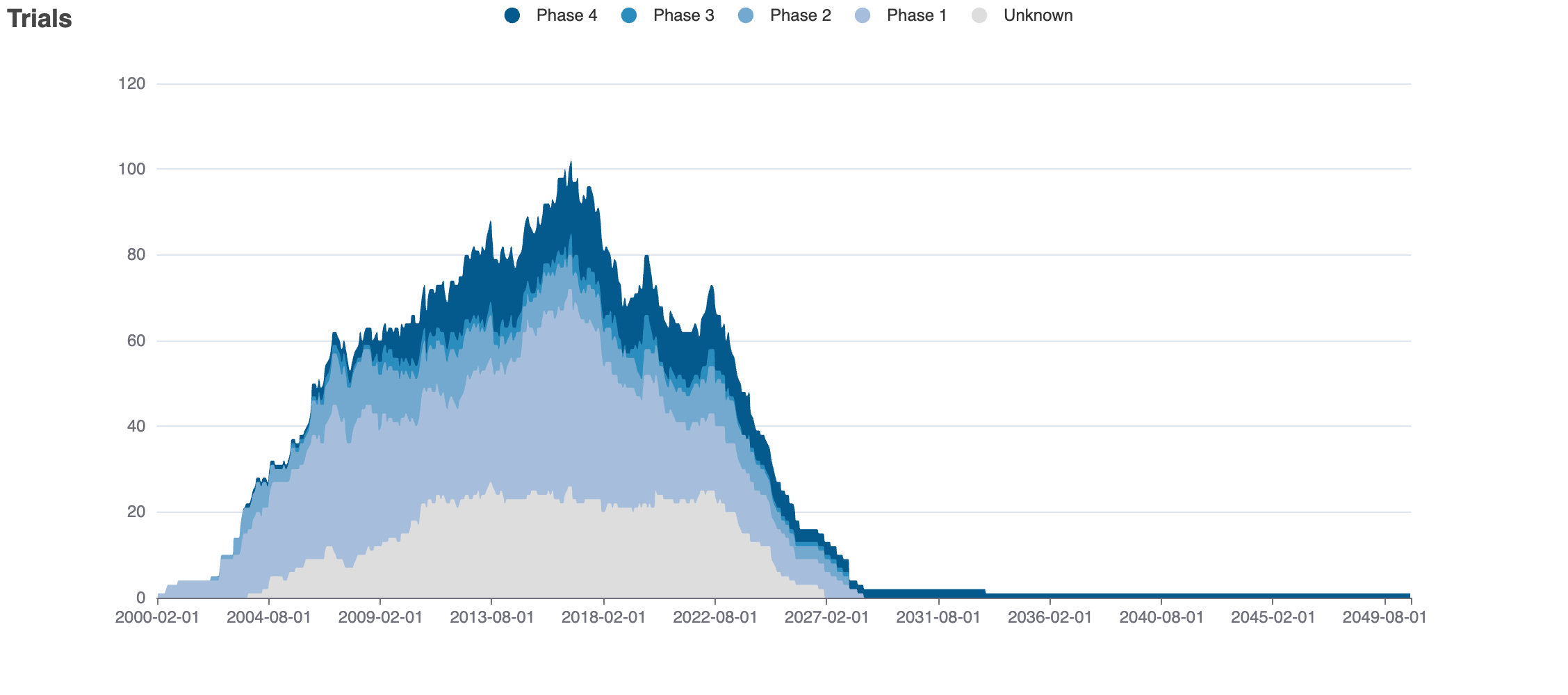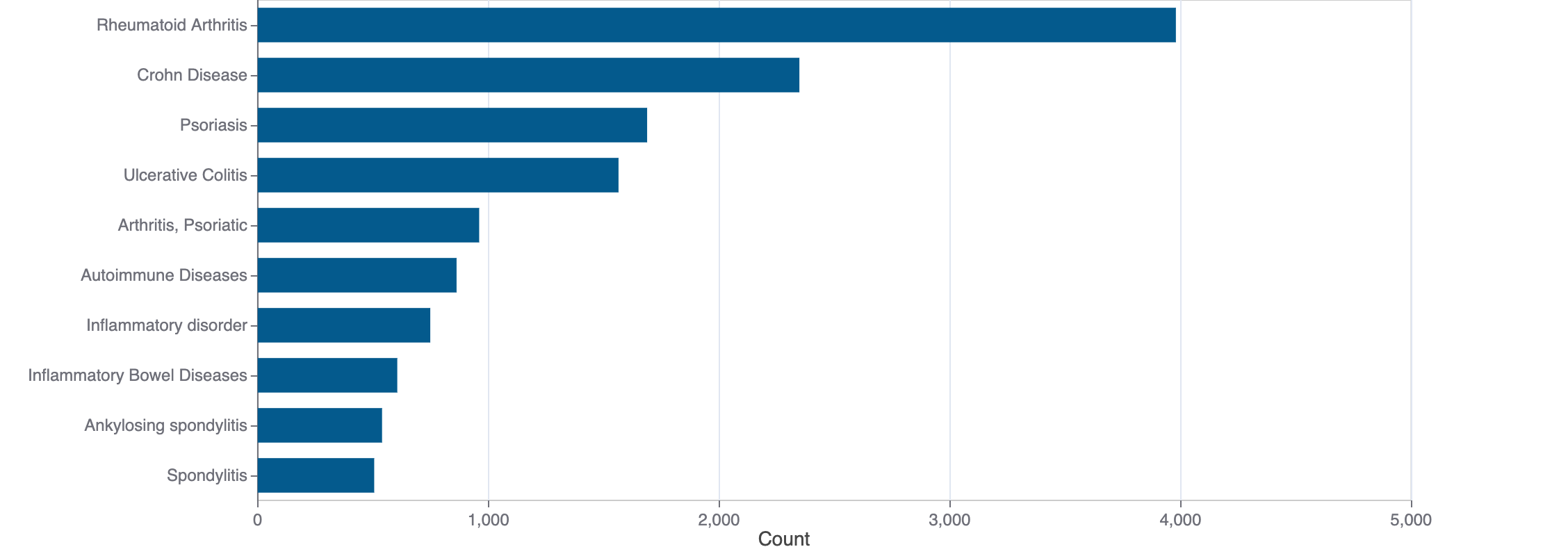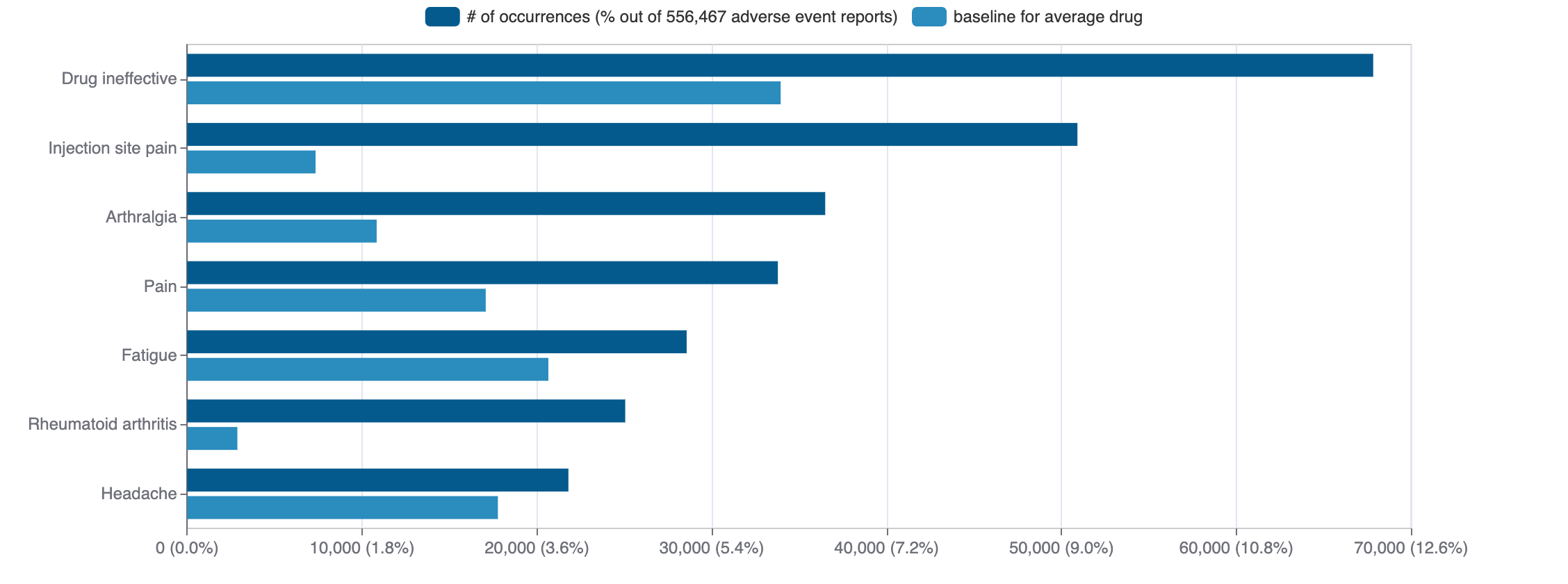Tykerb, Tyverb(lapatinib)
Lapatinib, Tykerb, Tyverb (lapatinib) is a small molecule pharmaceutical. Lapatinib was first approved as Tykerb on 2007-03-13. It is used to treat breast neoplasms in the USA. It has been approved in Europe to treat breast neoplasms. The pharmaceutical is active against receptor tyrosine-protein kinase erbB-2 and epidermal growth factor receptor.
Download report
Favorite
Events Timeline
Commercial
Clinical
Drug
Target
Variants
Financial
Trends
Safety
Events Timeline
5D
1M
3M
6M
YTD
1Y
2Y
5Y
Max
Events
FDA approval date
EMA approval date
Patent expiration date
Study first post date
Last update post date
Start date
Primary completion date
Completion date
Results first post date

Mock data
Subscribe for the real data
Subscribe for the real data
Commercial
Therapeutic Areas
Therapeutic Area | MeSH |
|---|---|
| neoplasms | D009369 |
| skin and connective tissue diseases | D017437 |
Trade Name
FDA
EMA
Lapatinib, Tykerb
Indications
FDA
EMA
Indication | Ontology | MeSH | ICD-10 |
|---|---|---|---|
| breast neoplasms | EFO_0003869 | D001943 | C50 |
Agency Specific
FDA
EMA
No data
Patent Expiration
Patent | Expires | Flag | FDA Information |
|---|---|---|---|
| Lapatinib Ditosylate, Tykerb, Novartis | |||
| 8821927 | 2029-09-18 | DS, DP | |
HCPCS
No data
Clinical
Clinical Trials
320 clinical trials
View more details

Mock data
Subscribe for the real data
Subscribe for the real data
Indications Phases 4
No data
Indications Phases 3
Indication | MeSH | Ontology | ICD-10 | Ph 1 | Ph 2 | Ph 3 | Ph 4 | Other | Total |
|---|---|---|---|---|---|---|---|---|---|
| Breast neoplasms | D001943 | EFO_0003869 | C50 | — | 1 | 1 | — | — | 1 |
| Mucinous adenocarcinoma | D002288 | — | — | — | 1 | 1 | — | — | 1 |
| Ductal carcinoma breast | D018270 | — | — | — | 1 | 1 | — | — | 1 |
| Inflammatory breast neoplasms | D058922 | — | — | — | 1 | 1 | — | — | 1 |
Indications Phases 2
No data
Indications Phases 1
No data
Indications Without Phase
No data
Epidemiology
Epidemiological information for investigational and approved indications
View more details
Drug
General
| Drug common name | Lapatinib |
| INN | lapatinib |
| Description | Lapatinib is an organofluorine compound, an organochlorine compound, a member of quinazolines and a member of furans. It has a role as an antineoplastic agent and a tyrosine kinase inhibitor. It is functionally related to a monofluorobenzene. |
| Classification | Small molecule |
| Drug class | tyrosine kinase inhibitors |
| Image (chem structure or protein) |  |
| Structure (InChI/SMILES or Protein Sequence) | CS(=O)(=O)CCNCc1ccc(-c2ccc3ncnc(Nc4ccc(OCc5cccc(F)c5)c(Cl)c4)c3c2)o1 |
Identifiers
| PDB | — |
| CAS-ID | 231277-92-2 |
| RxCUI | — |
| ChEMBL ID | CHEMBL554 |
| ChEBI ID | 49603 |
| PubChem CID | 208908 |
| DrugBank | DB01259 |
| UNII ID | 0VUA21238F (ChemIDplus, GSRS) |
Target
Agency Approved
ERBB2
ERBB2
EGFR
EGFR
Organism
Homo sapiens
Gene name
ERBB2
Gene synonyms
HER2, MLN19, NEU, NGL
NCBI Gene ID
Protein name
receptor tyrosine-protein kinase erbB-2
Protein synonyms
c-erb B2/neu protein, CD340, herstatin, human epidermal growth factor receptor 2, Metastatic lymph node gene 19 protein, MLN 19, neuro/glioblastoma derived oncogene homolog, neuroblastoma/glioblastoma derived oncogene homolog, p185erbB2, Proto-oncogene c-ErbB-2, Proto-oncogene Neu, Tyrosine kinase-type cell surface receptor HER2, v-erb-b2 avian erythroblastic leukemia viral oncogene homolog 2, v-erb-b2 avian erythroblastic leukemia viral oncoprotein 2, v-erb-b2 erythroblastic leukemia viral oncogene homolog 2, neuro/glioblastoma derived oncogene homolog
Uniprot ID
Mouse ortholog
Erbb2 (13866)
receptor tyrosine-protein kinase erbB-2 (Q6ZPE0)
Alternate
No data
Variants
No data
Financial
No data
Trends
PubMed Central
Top Terms for Disease or Syndrome:

Mock data
Subscribe for the real data
Subscribe for the real data
Additional graphs summarizing 22,439 documents
View more details
Safety
Black-box Warning
Black-box warning for: Lapatinib, Tykerb
Adverse Events
Top Adverse Reactions

Mock data
Subscribe for the real data
Subscribe for the real data
11,541 adverse events reported
View more details
© 2020-2025 Collaborative Drug Discovery Inc. (CDD) | Terms of Use